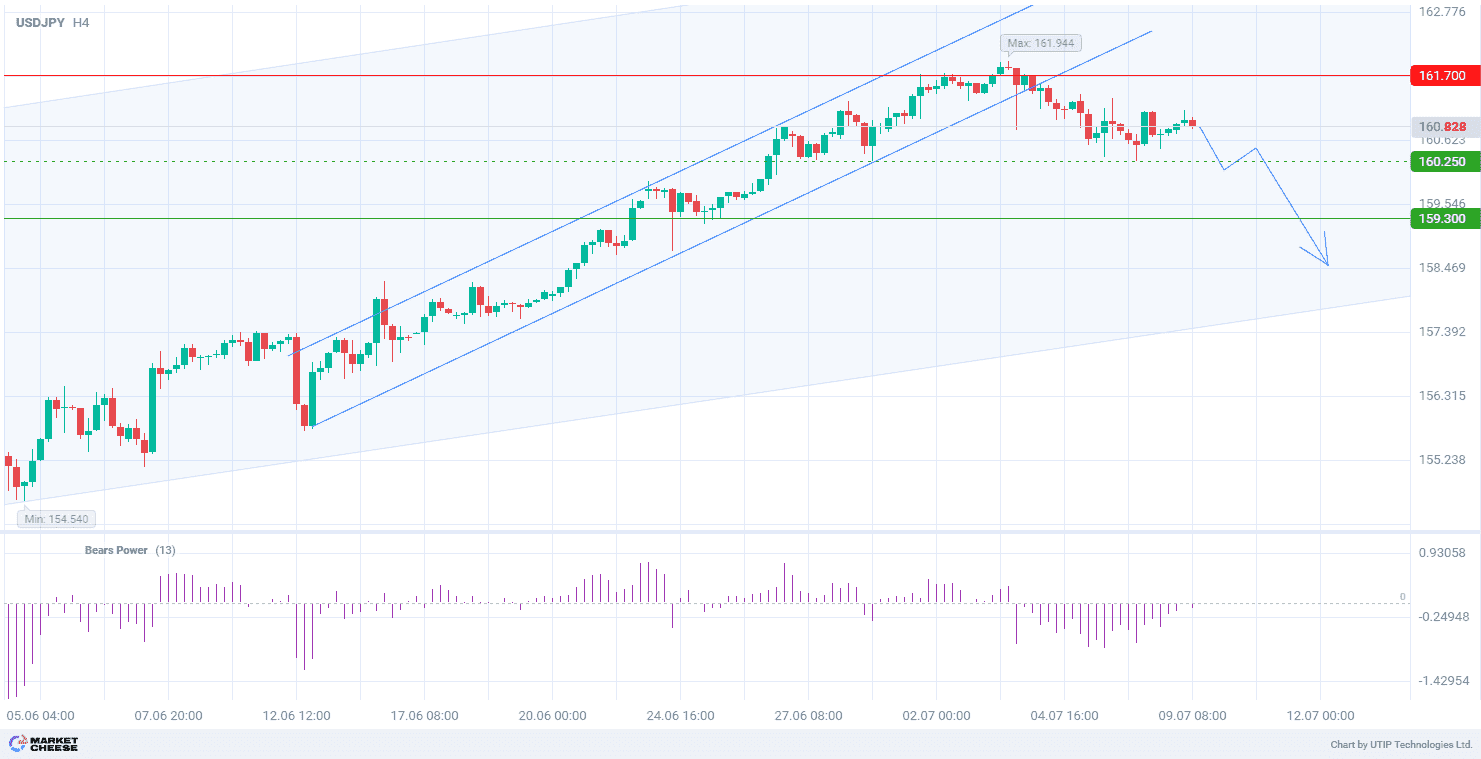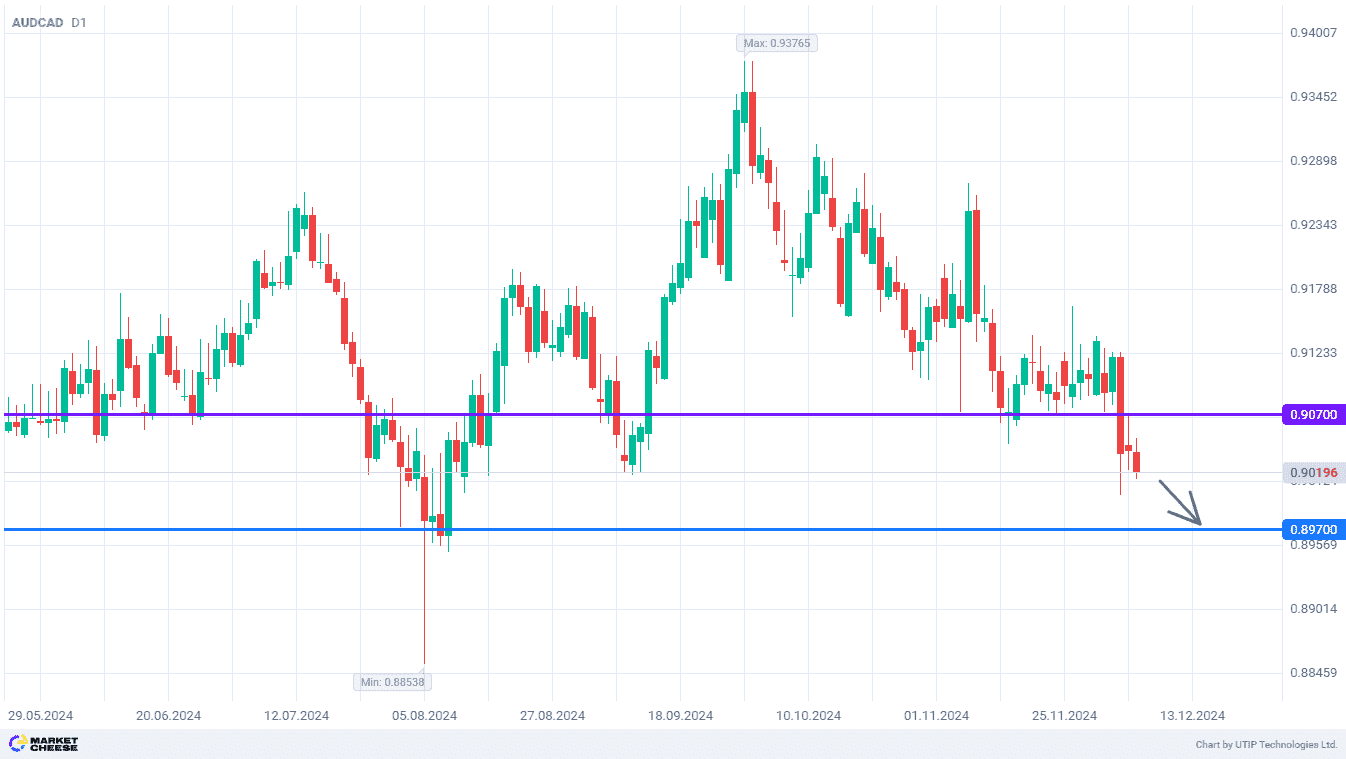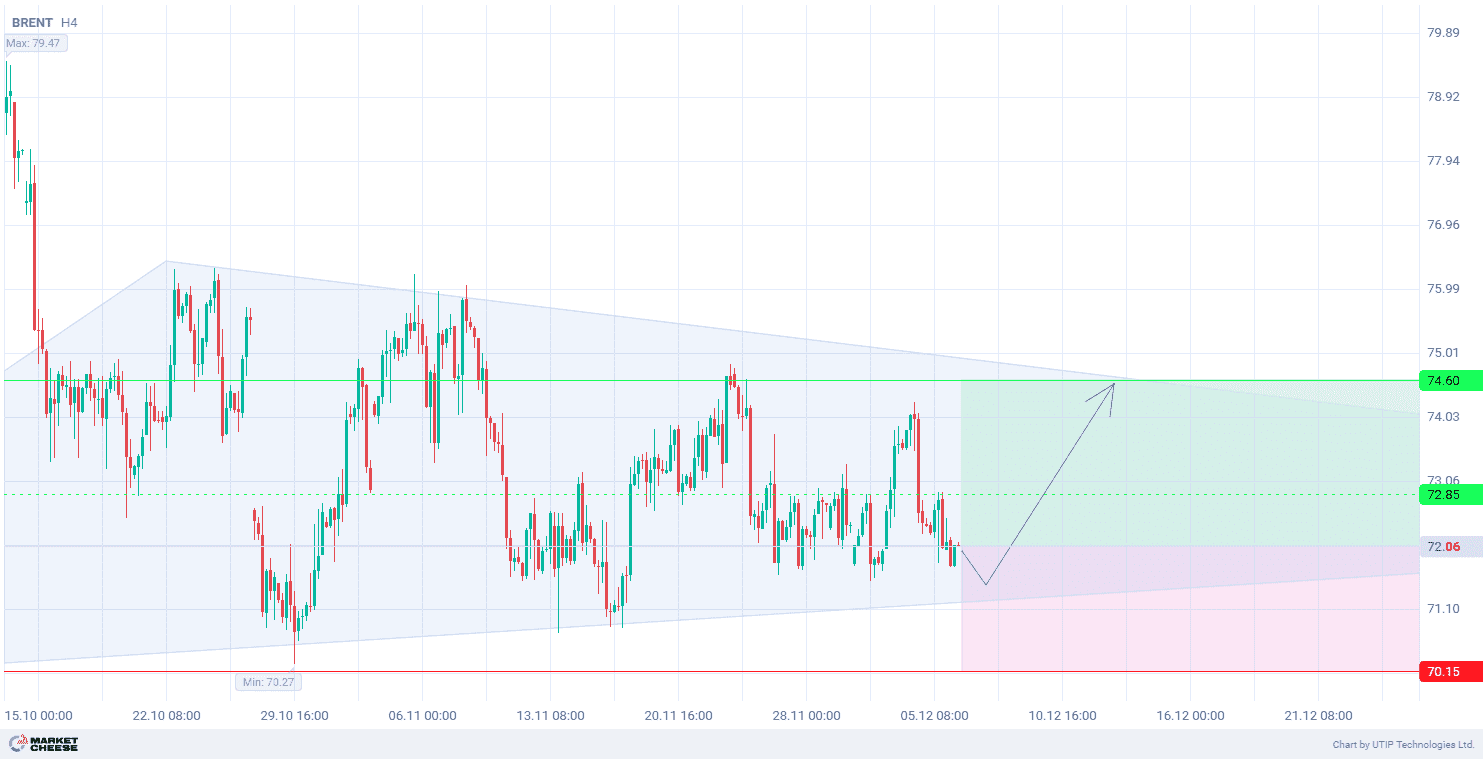On Tuesday USDJPY is moderately down from its 38-year high of 161.94 yen reached on July 3rd. The reason for the dollar’s recent decline was a weak US employment report released last Friday. The data reinforced traders’ expectations that the Federal Reserve (Fed) would soon ease its monetary policy.
Investors are now focused on comments from the Chairman of the US central bank, Jerome Powell. He is scheduled to address the US Senate on Tuesday and the House of Representatives on Wednesday. Powell’s statements could have a significant impact on the markets, as well as the inflation data that will be released on Thursday.
There is a gradual slowdown in the growth rates of consumer prices and employment in the US. Continuation of such dynamics may force the Fed to lower interest rates earlier than forecast. In this case, the dollar will continue to decline. Over the past week, the index of the American currency has already fallen by 0.9%.
According to the CME FedWatch tool, the markets are now estimating the probability of the Fed’s monetary easing in September at 76%. That’s up 10% from a week ago.
Meanwhile, the Bank of Japan may raise interest rates again on July 31st, following its first rate hike since 2007 in March. Despite these rumors, the yen failed to find any meaningful support.
From a technical perspective, USDJPY is in the process of forming a bullish trend on the D1 time frame. At the same time, the price has breached the upward trend on the H4 timeframe, signaling a change in direction. The volume of the Bears Power indicator (standard values) is in the negative zone, confirming the bearish movement.
Signal:
Short-term prospects for USDJPY suggest selling.
The target is at the level of 159.30.
Part of the profit should be taken near the level of 160.25.
A stop-loss could be placed at the level of 161.70.
The bearish trend is short-term, so trade volume should not exceed 2% of your balance.










